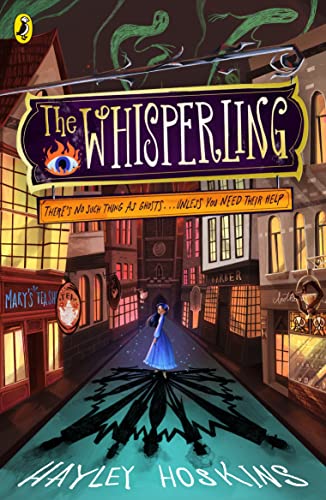The Whisperling
Peggy Devona is a ‘whisperling’ from a long line of female whisperlings, a term for people who can communicate with ghosts. Her female ancestors all had the gift, Peggy more strongly than most. Beginning in 1897, when Peggy is twelve, the tale represents an alternative ‘seeing’ of history. Although spiritualism and seances were popular with Victorians, children were rarely involved.
The introductory scenes begin at a slow pace introducing Peggy’s friend, Sally, aged fourteen, who has found a position as a maid with Lady Stanton in Clifton Lodge, near Bristol. The Devonas live in the village of Alderley, about ‘half a day’s carriage ride from Bristol’, where they run a funeral parlour. The pace quickens as Sally is imprisoned for the murder of her mistress. A local vicar is determined to out Peggy as a whisperling and, though they are no longer persecuted, she has to seek refuge with her father’s brother in Bristol. Here she meets Cecily and Oti who, with her uncle, hold seances.
Her uncle is especially interested in photographing ghosts. The walls of his house are covered with his pictures, but only Peggy can see that he has been partly successful. Even notable figures, such as Arthur Conan Doyle, believed in ghosts and spiritualism. A plan is hatched to rescue Sally, the story speeding up more towards the finale.
This story will resonate with young readers who enjoy gothic tales; it is aimed at readers of ten and over, but some may find the descriptions of funeral parlours, dead bodies and ghosts disturbing. There is good period detail, such as descriptions of food, clothing and the position of girls and women in society. This book is recommended for the right reader, the protagonist being a strong character with an unusual skill about whom further stories would be enjoyable.










